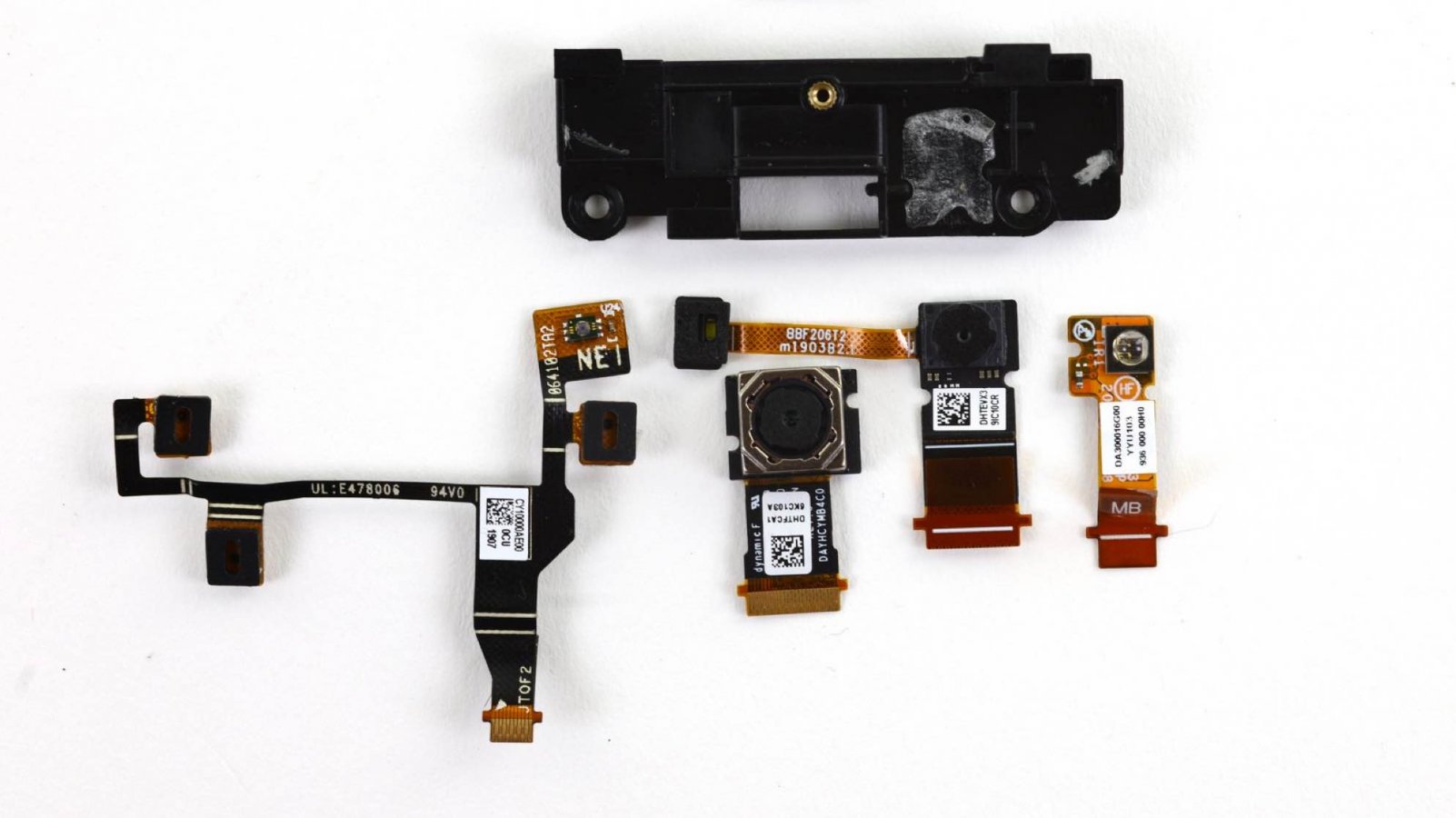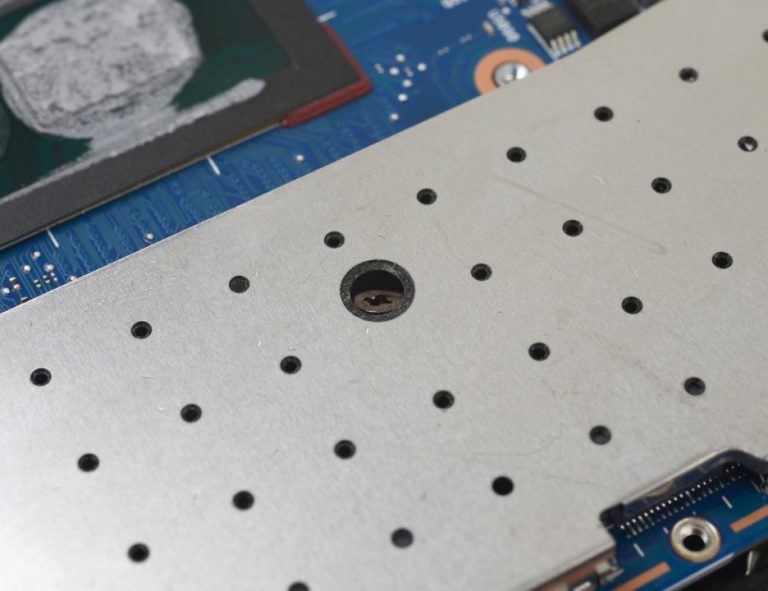In sports, in photography, in Fortnite, it’s that one great shot that keeps you coming back.
Most of your time pursuing your passions, you wade through so much mediocrity, so little excitement, you become numb to disappointment. But then you catch that one great moment that ensures you come back for more.
Yes, we are actually talking about laptops and tablets here. Laptops and tablets that reminded us that not every new device has to get a 2, a 1, a ZERO on our repairability scale. Opening up a laptop like HP’s EliteBook 840 G6, EliteBook x360 830 G5, EliteBook x360 830 G6, or a convertible tablet like the Elite x2 G4—it’s almost too much.

Keep in mind as you scan these images and read this praise: these are not your uncle’s business laptop. These utterly serviceable laptops are not much thicker than a miserably scoring MacBook. The 840 G6 is 0.71 inches (1.8 cm) high when closed, or 0.12 inches (0.31 cm) thicker than the latest MacBook Pro. Only one of these devices requires liquid solvent and more than an hour to change the battery.

Using only one slightly specialized screwdriver, a T8 Torx, we managed to remove the keyboard, trackpad, pointing stick, display, fingerprint sensor, card reader, battery—we could go on. What’s important about those parts are that they’re the parts that are most likely to wear out or malfunction. Being able to replace those without damaging any other part of the device, and get it closed again, is a core tenet of building a responsible, repairable device. It’s a big part of why the EliteBook 840 G6 earned a 10 out of 10 on our repairability scale.

The EliteBook G6 is not perfectly fixable in all ways. There are plastic clips on the case and keyboard that can break, and we broke one of them. The main cooling fan requires nearly full disassembly to remove (unnecessarily complex, but not a huge deal). Getting a 10 out of 10 on our repairability scale doesn’t mean a device could not be made more repairable, but it shows that the device maker has put a lot of thought and consideration into making a device that can be repaired and upgraded in the most common ways. Simply putting user-accessible repair guides online, and selling individual replacement parts, like HP has done, earns a device points on our Scale.
HP gave its x360 830 G5 and G6 the same consideration for long-term use and repairability, with a few subtle differences that garnered them nines out of 10 on our repairability scale.
The battery and fan are actually easier to remove on the 830 laptops than on the 840, due to the use of regular screws and a more streamlined modular design. The storage and memory are relatively easy to trade out, but they’re somewhat obscured under electromagnetic interference (EMI) shields. High-wear ports and buttons, like the headphone jack and volume rocker, are soldered to the motherboard, and not as reinforced as on the 840 laptop. And the keyboard can be removed, but with a ton more screws, and having to tear through some protective stickers.
On to the two-in-one Elite x2 G4.
Convertible tablets are not a device we’d associate with a repairable ethos. Tablets themselves are usually sealed, unintended for repair by the owner, and often have all their components soldered onto one or two boards. But somehow, the Elite x2 G4 managed to buck the trend and make a tablet that you can (brace yourself) open and fix.

You can replace the battery, solid-state storage, heatsink, even the front-facing camera with screws and some peeled-off tape. You can actually get to lots of modular pieces of the G4 after you dig in and take out some parts, only a few of which are a bit of an annoyance to remove.

It’s still a tablet, if a modular one, so there are some space-saving considerations that complicate upgrade or repair. The memory is soldered to the motherboard. The screen is a single unit that fuses together the LCD display, digitizer, and front glass—that makes replacement easier, but more costly, compared to swapping out one part or another.
Still, the G4 earns a 9 out of 10 on our scale. Considering what it is, and what’s likely to break on it, the G4 is remarkably longevity-minded when it comes to a convertible tablet. Even the hinge that lets it be a laptop, a non-standard part if there ever was one, can be easily removed and replaced.
We will try to hold onto these memories of, say, removing the fingerprint sensor out of a laptop with a Phillips-head screwdriver, when we have to pull out the heat gun and suction cups to open up future laptops and tablets. It’s these on-the-green-in-one, golden-sunlight-portrait moments that keep us coming back.¹
1: I’m sorry, I don’t know what a perfect graceful moment in Fortnite looks like. Is it building a huge tower of blocks and then sniping someone as they’re dancing? Okay, sure then, discovering these modular portable computers is like that.







8 Комментариев
Fortnite should not be referenced in this article.
Anthony Ybarra - Ответить
Fortnite should be referenced as often as possible in every single article.
Dave Davidson - Ответить
This article directly contradicts HP’s repair policy:
“CAUTION: This computer does not have user-replaceable parts. Only HP authorized service providers should perform the removal and replacement procedures described here. Accessing the internal part could damage the computer or void the warranty.”
also they stated on the same page: “There are as many as 49 screws that must be removed, replaced, and/or loosened when servicing Authorized Service Provider only parts. Make special note of each screw size and location during removal and replacement.”
Directly from HP maintenance and service guide:
https://content.etilize.com/User-Manual/...
page 26
Please fact check your articles before you accept HP’s paycheck next time. This article is filled with blatant misinformation.
Robert Albertson - Ответить
Hi Robert,
The manual you linked and referenced is for an HP product we didn’t address in this post, the HP EliteBook x360 1040 G5 (we wrote about 830, 840, and x2 G4 products). The user manuals for these products contain both a user-serviceable parts section and an authorized repair section.
Kevin Purdy -
And heres further proving my point, here is the X2 tablet service guide - http://content.etilize.com/User-Manual/1...
Chapter 5 -Removal and replacement procedures for Customer Self-Repair parts.
Only the kickstand is listed.
Chapter 6 - Removal and replacement procedures for Authorized Service Provider parts
“CAUTION: This computer does not have user-replaceable parts. Only HP authorized service providers should perform the removal and replacement procedures described here. Accessing the internal part could damage the computer or void the warranty.“
All non-kickstand components.
These are the facts from HP.
Robert Albertson - Ответить